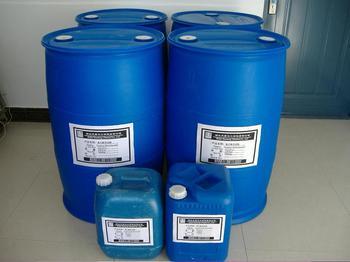 In May, the chemical market continued to face downward pressure, with a significant portion of products experiencing price declines. According to data from industry associations, out of the 68 chemical products monitored, 44.1% saw their prices drop, while 39.7% remained stable and only 16.2% recorded increases. This trend reflects weak demand across the sector, which has been a major concern for market participants.
Business analyst Zhang Ming pointed out that insufficient demand remains the core challenge in the current chemical market. He expects some products to enter their peak export season in the coming months, which could help stabilize prices. According to his analysis, the market is likely to reach a bottom by late June or early July, setting the stage for a potential rebound in the third quarter as demand gradually recovers.
The chemical industry index hit a low of 921 points on May 30, breaking below the 2012 level. Several key products saw sharp declines, including ammonium sulfate, n-butanol, crude oil, coking benzene, ethanol, DOP, pure benzene, and urea. On the other hand, certain products such as phenol, styrene, glyphosate, and others have maintained upward momentum for two consecutive months, showing resilience in specific segments of the market.
In some sectors, production cuts and maintenance activities have led to lower supply levels, resulting in more stable pricing. For example, propylene oxide and styrene plants entered their maintenance period in May, contributing to tighter supply conditions. In some industrial chains, cost pressures have also driven price increases. The recent rise in epichlorohydrin prices, for instance, is largely attributed to higher raw material costs, particularly for ** and propylene, as manufacturers seek to pass on these increased expenses to downstream buyers.
Overall, the chemical market remains volatile, with mixed performance across different product categories. While many chemicals are under pressure due to weak demand, others are benefiting from supply-side constraints and rising input costs. As the market moves into the second half of the year, investors and traders will be closely watching for signs of recovery and renewed growth.
In May, the chemical market continued to face downward pressure, with a significant portion of products experiencing price declines. According to data from industry associations, out of the 68 chemical products monitored, 44.1% saw their prices drop, while 39.7% remained stable and only 16.2% recorded increases. This trend reflects weak demand across the sector, which has been a major concern for market participants.
Business analyst Zhang Ming pointed out that insufficient demand remains the core challenge in the current chemical market. He expects some products to enter their peak export season in the coming months, which could help stabilize prices. According to his analysis, the market is likely to reach a bottom by late June or early July, setting the stage for a potential rebound in the third quarter as demand gradually recovers.
The chemical industry index hit a low of 921 points on May 30, breaking below the 2012 level. Several key products saw sharp declines, including ammonium sulfate, n-butanol, crude oil, coking benzene, ethanol, DOP, pure benzene, and urea. On the other hand, certain products such as phenol, styrene, glyphosate, and others have maintained upward momentum for two consecutive months, showing resilience in specific segments of the market.
In some sectors, production cuts and maintenance activities have led to lower supply levels, resulting in more stable pricing. For example, propylene oxide and styrene plants entered their maintenance period in May, contributing to tighter supply conditions. In some industrial chains, cost pressures have also driven price increases. The recent rise in epichlorohydrin prices, for instance, is largely attributed to higher raw material costs, particularly for ** and propylene, as manufacturers seek to pass on these increased expenses to downstream buyers.
Overall, the chemical market remains volatile, with mixed performance across different product categories. While many chemicals are under pressure due to weak demand, others are benefiting from supply-side constraints and rising input costs. As the market moves into the second half of the year, investors and traders will be closely watching for signs of recovery and renewed growth.Zhejaing Sealand Technology Co., Ltd. is a trustworthy manufacturer of Mass Flow Meter, Mass Flowmeter, Mass Meter, Flow Meter, Flowmeter, ATEX, IECEx & CE approved. The product range covers different size from DN03 to DN150, and bigger sizes are being developed.
Sealand mass flow meter is designed and produced according to world`s latest Coriolis technology with exelent appearance, stability and accuracy to measure mass flow rate of a fluid traveling through a tube, widely applied to alternative energy, oil & gas, chemical, food & beverage, industrial energy, marine, power, pulp & paper, water & wastewater industries, etc.
Mass flow meter measures the mass based on Coriolis effort. The operating principle involves inducing a vibration of the tube through which the fluid passes. The vibration, though not completely circular, provides the rotating reference frame that gives rise to the Coriolis effect. While specific methods vary according to the design of the flow meter, sensors monitor and analyze changes in frequency, phase shift & amplitude of the vibrating flow tubes. The changes observed represent the mass flow rate and density of the fluid.
Mass Flow Meter, Mass Flowmeter, Mass Meter, Flow Meter, Flowmeter
Zhejiang Sealand Technology Co., Ltd. , https://www.sealandflowmeter.com
